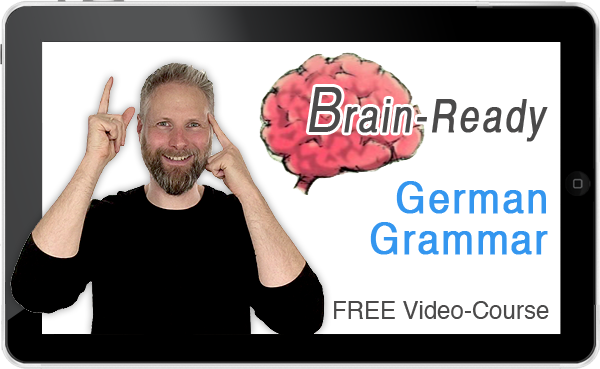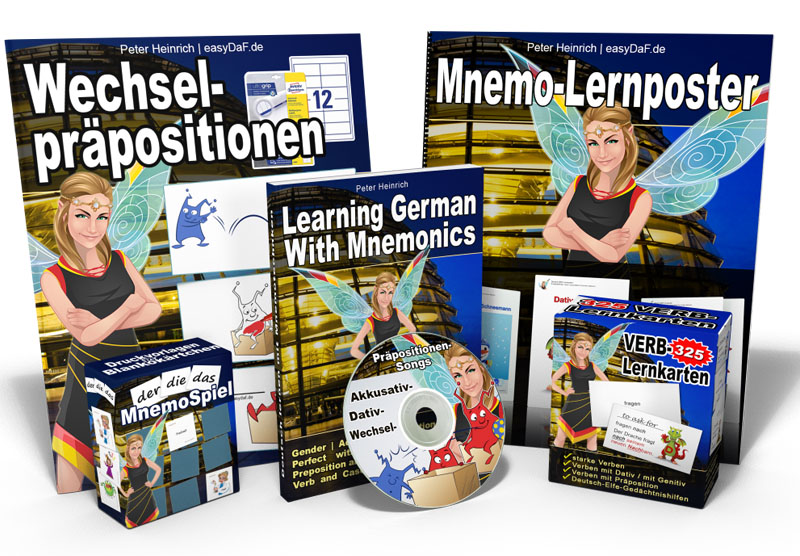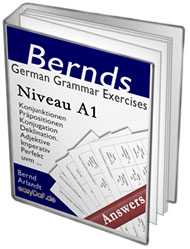This very simple trick helps my students to learn German gender words (der, die, das) really easily

But let’s look again at exactly what Mark Twain said:
1. The attribution of the articles doesn’t make any sense – neither is there a system! Unfortunately this is true.
2.To learn the German articles, you need a super-memory („like a memorandom-book“). This is true as well! And here you will learn that you already have this super-memory; you only lack the right technique!
Many of you will now probably say: „Wait a moment, this isn’t right! There is definitely a system!“ Of course, you’re right, at least there is a „little system“, namely the so called gender specific endings. To avoid complicating it too much, we call them simply the „special endings“, which indicate the correct article.
Here are a few examples
The ending -ung is always feminine, thus „die„.

The ending -or is alway masculine, thus „der„.

The ending -chen is always neuter, thus „das„.

We don’t want to get involved in this argument, we will concentrate on a few endings, which really (almost) always indicate the correct article.
Many students of German have already come across „learning tips“ for German articles such as this one, in their textbook:
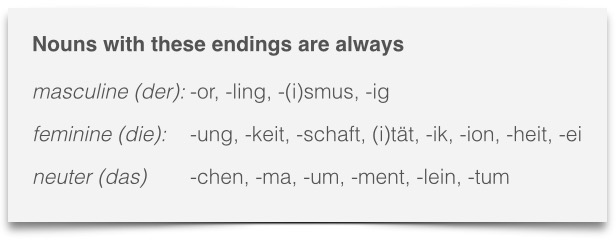
But honestly: Who is actually able to memorize these endings?
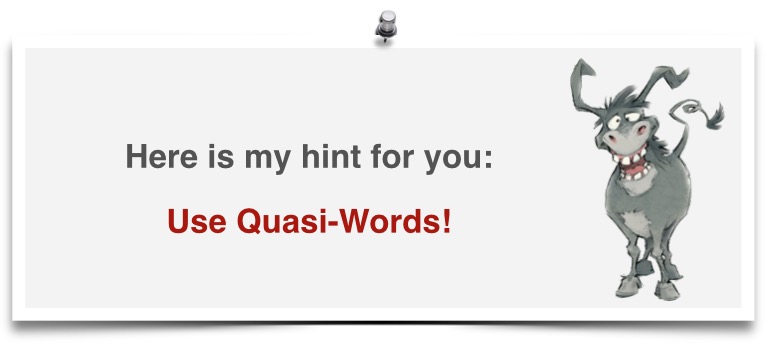
What are Quasi-Words?
„Quasi“ is Latin, and means in English „how“. And that here is the Trick:
We arrange the syllables in such a way that we can pronounce them as a word. And for this we invent a short story together with a nice image.
And here is how it works:
This bacillus is responsible for the use of articles in the German language! Repeat this word slowly with me, until you know it by heart.
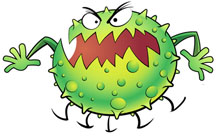

Heit-ung-keit-ei-schaft-tion-(i)tät-ik.
There she is researching to find vaccine against „den Iglingorismus“.
The word is fairly long, but don’t give up immediately! Pronounce it slowly, together with me, and keep repeating it, until you know it.
das Tum-chen-ma-ment-um-lein
It will always be on your side in the future, and whisper the correct articles in your ear.
As you can see, this Quasi-word is again a lot shorter and therefore even more easy to learn.
And there we go again …
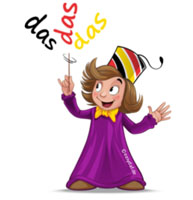
But what if there are no „special“ endings?
And let’s be honest – most of the time there are none …
That’s too bad! With these nouns it’s impossible to detect the correct article by their ending. And let’s remember Mark Twain: „So one must learn the gender together with the noun, there is no other way.“
But:
In my eBook-package you´ll find the answers to these questions and a bunch more really smart tricks which will help you significantly with learning German.
Learn German grammar with mnemonics – The Deutsch-Elfe® Package
More help with learning German articles from Akkiz
She uses a symbol for each article, and thereby visualizes the corresponding body parts:
The baby (das Baby) is a symbol for the article das.
The singer Beyonce is a symbol for the article die.
And here is how Akkiz‘ students learn the body parts:

der Mund
der Zahn
der Finger
der Kopf
der Hals
der Arm
der Rücken
der Bauch
der Fuß
neuter
das Haar, das Gesicht,
das Auge,das Bein,
das Knie
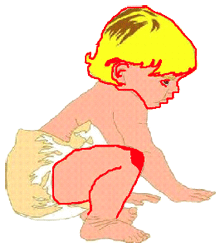
feminine
die Nase, die Schulter, die Brust, die Hand
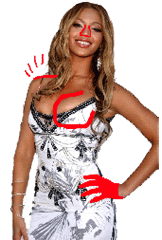
With this lively method, the students obviously find it a lot easier to memorize the articles! Have a look for yourself:
das Kleid
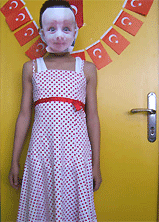
der Mantel
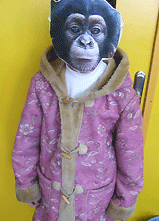
Still more help with learning German articles from Antonio
In this short video, you’ll see a superb example of learning German in a creative way.
If, besides German, you want to learn Italian, have a look at Antonio´s great website of Antonio; I can strongly recommend this teacher. www.italianoinitalia.com
Learning aids for German grammar
If you really want to learn German grammar, I would like to recommend you to use creative learning aids for German as a foreign language. In my FREE Video-Course "German Grammar for your Brain".
